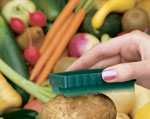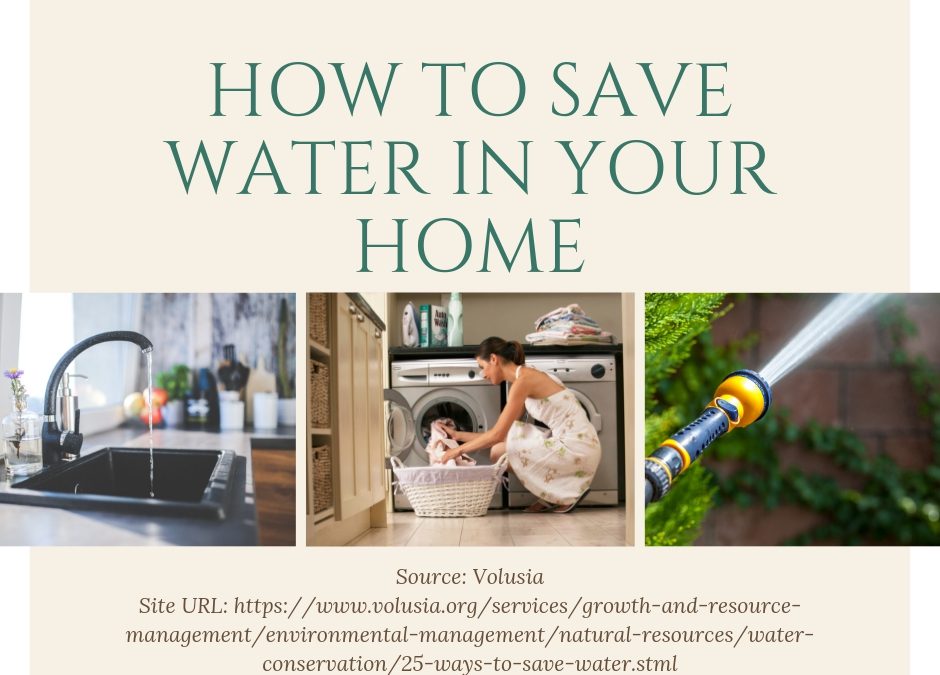At GroGuru, we are laser focused on bringing farmers the knowledge and technology that they need to save water, fertilizer and overall, money each year! While many people in the world are not large-scale farmers and probably will never have a use for our solution, you can still do your part to help save the planet by doing these 25 things to save water in your own home! How many of them have you done or are doing currently? Comment below! We’d love to hear from you!
(This list is originally posted on https://www.volusia.org/services/growth-and-resource-management/environmental-management/natural-resources/water-conservation/25-ways-to-save-water.stml)
1. Check your toilet for leaks
Put a few drops of food coloring in your toilet tank. If, without flushing, the coloring begins to appear in the bowl., you have a leak that may be wasting more than 100 gallons of water a day.
2. Stop using your toilet as an ashtray or wastebasket
Every cigarette butt or tissue you flush away also flushes away five to seven gallons of water.
3. Put a plastic bottle in your toilet tank
Put an inch or two of sand or pebbles in the bottom of a one liter bottle to weigh it down. Fill the rest of the bottle with water and put it in your toilet tank, safely away from the operating mechanism. In an average home, the bottle may save five gallons or more of water every day without harming the efficiency of the toilet. If your tank is big enough, you may even be able to put in two bottles.
4. Take shorter showers
A typical shower uses five to ten gallons of water a minute. Limit your showers to the time it takes to soap up, wash down and rise off.
5. Install water-saving shower heads or flow restrictors
Your hardware or plumbing supply store stocks inexpensive shower heads or flow restrictors that will cut your shower flow to about three gallons a minute instead of five to ten. They are easy to install, and your showers will still be cleansing and refreshing.
6. Take baths
A partially filled tub uses less water than all but the shortest showers.

7. Turn off the water while brushing your teeth
Before brushing, wet your brush and fill a glass for rinsing your mouth.
8. Turn off the water while shaving
Fill the bottom of the sink with a few inches of warm water in which to rinse your razor.
9. Check faucets and pipes for leaks
Even a small drip can waste 50 or more gallons of water a day.
10. Use your automatic dishwasher for full loads only
Every time you run your dishwasher, you use about 25 gallons of water.
11. Use your automatic washing machine only for full loads only
Your automatic washer uses 30 to 35 gallons per cycle.

12. Don’t let the faucet run while you clean vegetables
Rinse your vegetables instead in a bowl or sink full of clean water.
13. Keep a bottle of drinking water in the refrigerator
This puts a stop to the wasteful practice of running tap water to cool it for drinking.
14. If you wash dishes by hand, don’t leave the water running for rinsing
If you have two sinks, fill one with rinse water. If you have only one sink, first gather all your washed dishes in a dish rack, then rinse them quickly with a spray device or a pan of water.
15. Check faucets and pipes for leaks
Leaks waste water 24 hours a day, seven days a week. An inexpensive washer is usually enough to stop them.

16. Water your lawn only when it needs it
Watering on a regular schedule doesn’t allow for cool spells or rainfall which reduce the need for watering. Step on some grass. If it springs back up when you move your foot, it doesn’t need water.
17. Deep-soak your lawn
When you do water your lawn, water it long enough for water to seep down to the roots where it is needed. A light sprinkling that sits on the surface will simply evaporate and be wasted.
18. Water during the cool parts of the day
Early morning is better than dusk since it helps prevent the growth of fungus.
19. Don’t water the gutter
Position your sprinklers so that water lands on your lawn or garden, not in areas where it does no good. Also, avoid watering on windy days when much of your water may be carried off to the streets and sidewalks.
20. Plant drought-resistant trees and plants
Many beautiful trees and plants thrive without irrigation.
21. Put a layer of mulch around trees and plants.
Mulch slows the evaporation of moisture.
22. Use a broom to clean driveways, sidewalks and steps
Using a hose wastes hundreds and hundreds of gallons of water.
23. Don’t run the hose while washing your car
Soap down your car from a pail of soapy water. Use a hose only to rinse it off.
24. Tell your children not to play with the hose and sprinklers
Children love to play under a hose or sprinkler on a hot day. Unfortunately, this practice is extremely wasteful of precious water and should be discouraged.
25. Check for leaks in pipes, hoses faucets and couplings
Leaks outside the house are easier to ignore since they since they don’t mess up the floor or keep you awake at night. However, they can be even more wasteful than inside water leaks especially when they occur on your main water line.

